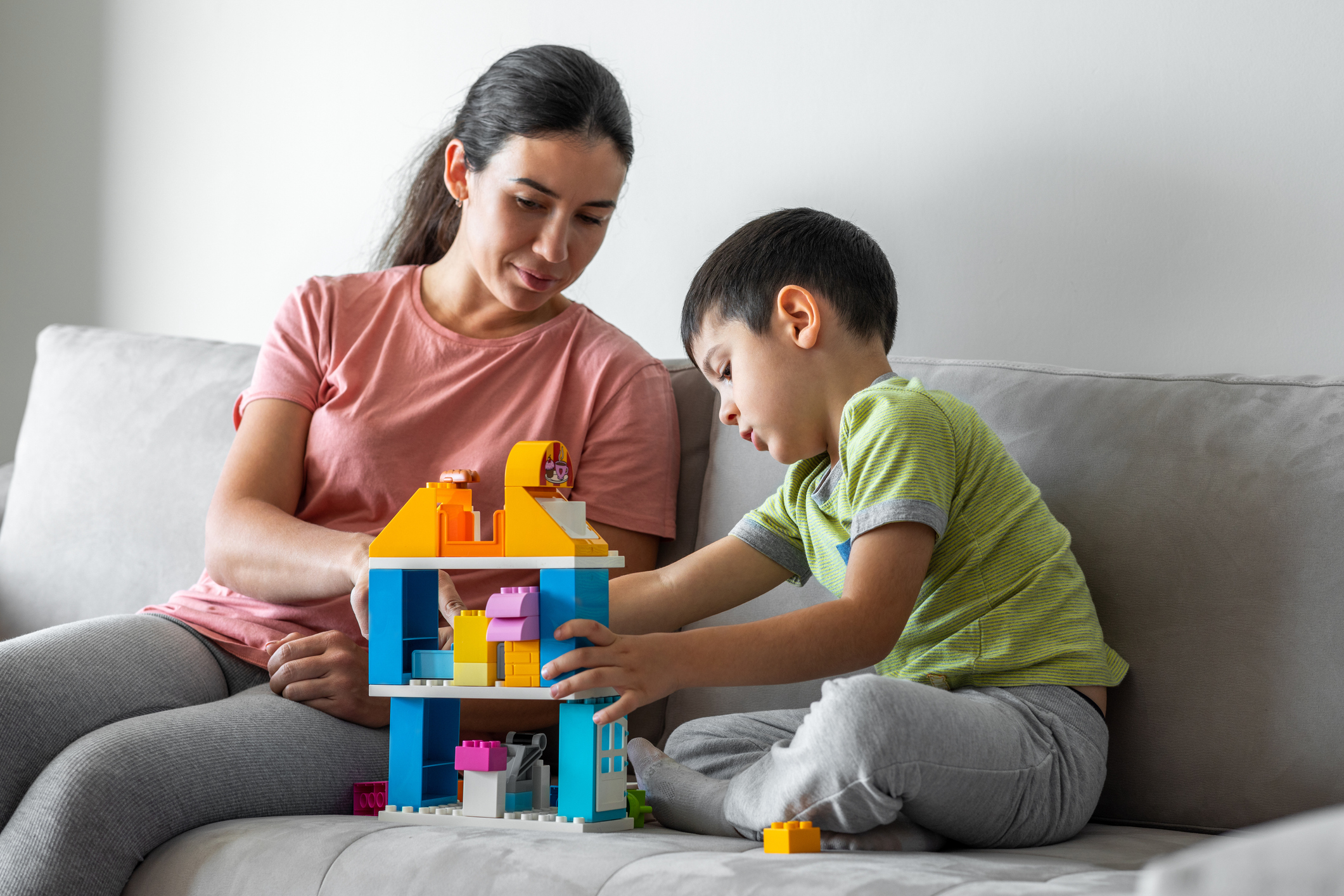Welcome to our blog post on the power of attachment and the importance of building secure relationships with children in residential care. In this post, we will explore the concept of attachment theory and how it applies to children in residential care settings. We will also discuss the role of caregivers in fostering secure attachments and provide strategies for building and maintaining these relationships.
Attachment is a fundamental human need that plays a crucial role in a child’s emotional and social development. It refers to the deep and enduring emotional bond that forms between a child and their primary caregiver. This bond serves as a foundation for the child’s future relationships and influences their overall well-being.
For children in residential care, forming and maintaining secure attachments can be particularly challenging. These children often come from backgrounds of trauma, neglect, or abuse, which can impact their ability to trust and form healthy relationships. However, research has shown that with the right support and interventions, it is possible to nurture secure attachments and promote positive outcomes for these children.
Understanding attachment theory provides a framework for residential care providers to better meet the needs of the children in their care. Attachment theory explains how early experiences shape a child’s attachment style, which can be categorized as secure, insecure-avoidant, insecure-anxious, or disorganized. By recognizing the signs of insecure attachment, caregivers can tailor their approaches to meet the specific needs of each child.
Building secure attachments requires intentional and consistent efforts from caregivers. This involves creating a safe and nurturing environment, providing emotional support, and promoting healthy communication and connection. It also means being attuned to the unique needs and experiences of each child and adapting strategies accordingly.
While building secure attachments with children in residential care can be challenging, it is not impossible. In this blog post, we will provide practical strategies for caregivers to navigate the obstacles they may encounter and foster secure relationships with the children in their care.
We will also delve into the implementation of attachment-based practices in residential care settings, including creating attachment-friendly environments, providing training and support for staff, and evaluating the impact of these practices on the well-being of the children.
To illustrate the power of attachment and the impact it can have on children in residential care, we will share case studies of successful attachment practices. These case studies will highlight inspiring success stories, overcoming challenges, and the long-term positive effects that secure attachments can have on a child’s life.
Join us as we explore the power of attachment and discover how building secure relationships can transform the lives of children in residential care. Together, we can create a nurturing and supportive environment that allows these children to thrive and reach their full potential.
Understanding Attachment: Its Importance and Impact on Children in Residential Care
Understanding Attachment: Its Importance and Impact on Children in Residential Care
Attachment is a fundamental aspect of human development that plays a significant role in a child’s emotional and social well-being. It refers to the deep and lasting emotional bond that forms between a child and their primary caregiver, typically established in the early years of life. This attachment bond serves as a foundation for the child’s future relationships and has a profound impact on their overall development.
In the context of residential care, where children may have experienced trauma, neglect, or separation from their primary caregivers, understanding attachment becomes even more crucial. These children often enter residential care with disrupted attachment patterns, which can affect their ability to form healthy relationships and regulate their emotions.
The importance of attachment in residential care lies in its potential to promote healing, resilience, and positive developmental outcomes for the children. When children feel securely attached to their caregivers, they experience a sense of safety, trust, and emotional support. This, in turn, enhances their ability to explore their environment, develop self-regulation skills, and form healthy relationships with peers and adults.
Without secure attachments, children in residential care may struggle with emotional regulation, exhibit challenging behaviours, and have difficulty forming trusting relationships with caregivers and peers. They may also face long-term consequences, such as impaired social skills, lower self-esteem, and increased vulnerability to mental health issues.
Understanding the impact of attachment on children in residential care is essential for caregivers and professionals working in these settings. It allows them to recognize the unique needs and challenges faced by these children and provides a framework for implementing effective interventions.
By understanding attachment, caregivers can create a safe and nurturing environment that supports the development of secure attachments. They can provide consistent and responsive care, acknowledge and validate the child’s emotions, and promote positive interactions to help children in residential care develop healthy attachment patterns.
In the following sections, we will delve deeper into attachment theory, explore how it applies to children in residential care, and discuss the role of caregivers in fostering secure attachments. By gaining a comprehensive understanding of attachment, we can better support the emotional well-being and development of children in residential care.
Exploring the Attachment Theory: A Framework for Residential Care
Exploring the Attachment Theory: A Framework for Residential Care
Attachment theory, developed by John Bowlby and further expanded upon by Mary Ainsworth, provides a valuable framework for understanding the dynamics of attachment and its impact on children in residential care. This theory helps caregivers and professionals working in residential care settings gain insights into the needs and behaviours of children who have experienced disrupted attachments.
The Basics of Attachment Theory
Attachment theory proposes that early interactions between infants and their primary caregivers shape the child’s internal working models of relationships. These working models influence how the child perceives themselves, others, and the world around them. The theory emphasises the importance of a secure base, where the child feels safe to explore and seeks comfort and support when needed.
According to attachment theory, there are four main attachment styles:
- Secure Attachment: Children with a secure attachment style feel safe and secure in their relationships. They trust their caregivers, seek comfort from them when distressed, and are confident in exploring their environment.
- Insecure-Avoidant Attachment: Children with an insecure-avoidant attachment style may avoid or show little interest in their caregivers. They may not seek comfort when distressed and appear independent. This attachment style often develops when caregivers are consistently unresponsive or dismissive of the child’s needs.
- Insecure-Anxious Attachment: Children with an insecure-anxious attachment style may exhibit clingy or anxious behaviour. They may seek excessive reassurance from their caregivers, struggle with separation anxiety, and have difficulty self-soothing. This attachment style can develop when caregivers are inconsistently responsive or unpredictable in meeting the child’s needs.
- Disorganised Attachment: Children with a disorganised attachment style display a lack of coherent attachment behaviours. They may exhibit contradictory or disoriented behaviours in their interactions with caregivers. This attachment style often arises in situations of severe neglect, abuse, or trauma.
How Attachment Theory Applies to Children in Residential Care
Children in residential care often come from backgrounds of trauma, neglect, or disrupted attachments. Understanding attachment theory is crucial in working with these children, as it helps caregivers and professionals recognize the attachment patterns and behaviours exhibited by the children in their care.
By understanding the specific attachment styles of these children, caregivers can tailor their approaches to meet their unique needs. For example, children with an insecure-avoidant attachment may benefit from consistent and predictable caregiving, while children with an insecure-anxious attachment may require reassurance and support in building trust.
The Role of Caregivers in Attachment Theory
Caregivers play a vital role in fostering secure attachments with children in residential care. They serve as the primary figures who provide emotional support, create a safe environment, and build trusting relationships with the children.
Caregivers should strive to be sensitive and responsive to the needs of the children in their care. This involves being attuned to their cues, providing comfort and support when needed, and promoting a sense of security and trust. By being consistent and reliable caregivers, they can help children develop secure attachment patterns and improve their overall well-being.
In the next section, we will explore practical strategies for building secure attachments with children in residential care. These strategies will provide caregivers and professionals with actionable steps to promote healthy relationships and support the emotional development of the children in their care.
Building Secure Attachments with Children in Residential Care
Building Secure Attachments with Children in Residential Care
Building secure attachments with children in residential care is a vital aspect of promoting their emotional well-being and providing them with a foundation for healthy relationships. While it may pose unique challenges due to the children’s backgrounds and experiences, there are strategies that caregivers can employ to foster secure attachments and create a nurturing environment.
Recognizing the Signs of Insecure Attachment
Before delving into the strategies for building secure attachments, caregivers need to be able to recognize the signs of insecure attachment in children. Some common indicators may include:
- Difficulty trusting caregivers or others.
- Avoidance of physical touch or closeness.
- Excessive clinginess or need for constant reassurance.
- Difficulty self-soothing or regulating emotions.
- Fear or anxiety when separated from caregivers.
By understanding these signs, caregivers can identify the attachment style of each child and tailor their approaches accordingly.
Strategies for Building Secure Attachments
- Establishing a Safe and Nurturing Environment: Creating a physically and emotionally safe environment is crucial for building secure attachments. This includes providing consistent routines, clear boundaries, and a warm and supportive atmosphere. Children need to feel that they are in a stable and caring environment where their needs will be met.
- Responsive and Attuned Caregiving: Caregivers should strive to be responsive and attuned to the needs of the children. This involves actively listening, observing their cues, and providing timely and appropriate responses. By consistently meeting their physical and emotional needs, caregivers can build trust and security.
- Building Emotional Connection: Developing a deep emotional connection with the children is essential for building secure attachments. Caregivers can do this by engaging in meaningful interactions, such as play, conversation, and shared activities. These interactions should focus on building trust, fostering positive emotions, and promoting a sense of belonging.
- Promoting Healthy Communication: Effective communication is vital for building secure attachments. Caregivers should encourage open and honest expression of emotions, thoughts, and needs. Creating a safe space for children to share their experiences and feelings without fear of judgment or punishment fosters trust and strengthens the attachment bond.
- Consistency and Predictability: Children in residential care often crave stability and predictability due to the disruptions they have experienced. Caregivers should strive to provide consistent care, routines, and expectations. This consistency helps children feel secure, reduces anxiety, and builds trust in their caregivers.
Navigating Challenges in Building Secure Attachments
Building secure attachments with children in residential care may present various challenges. Some common challenges include:
- Resistance or fear of attachment due to past traumas.
- Difficulty in trusting caregivers or forming new relationships.
- Challenging behaviours that stem from insecure attachment patterns.
- Transitions or changes in the residential care environment.
Caregivers can navigate these challenges by seeking support from professionals, engaging in ongoing training, and utilizing therapeutic techniques that specifically address attachment issues. Patience, understanding, and a trauma-informed approach are key to overcoming these obstacles and building secure attachments with the children in residential care.
Building secure attachments takes time and dedication, but the rewards are immense. By providing a safe and nurturing environment, being responsive and attuned to the children’s needs, and employing effective strategies, caregivers can foster secure attachments and positively impact the well-being and future relationships of the children in residential care.
In the next section, we will discuss the implementation of attachment-based practices in residential care settings. These practices provide a comprehensive approach for creating attachment-friendly environments and supporting the development of secure relationships.
Implementing Attachment-Based Practices in Residential Care
Implementing Attachment-Based Practices in Residential Care
Implementing attachment-based practices in residential care settings is essential for creating an environment that supports the development of secure attachments and promotes positive outcomes for children. These practices involve creating attachment-friendly environments, providing training and support for staff, and evaluating the impact of these practices on the well-being of the children.
Creating an Attachment-Friendly Environment
- Building Relationships: Developing strong and trusting relationships between caregivers and children is at the core of an attachment-friendly environment. This involves providing consistent and nurturing care, promoting open communication, and creating opportunities for meaningful interactions.
- Physical Environment: The physical environment should be designed to support secure attachments. This includes providing comfortable and inviting spaces, personalizing living areas, and ensuring a sense of safety and privacy.
- Routines and Predictability: Establishing consistent routines and predictable schedules helps children feel secure and reduces anxiety. Clear expectations and structure provide a sense of stability and support the development of secure attachments.
- Emotional Support: Children in residential care often have experienced trauma and may require additional emotional support. Providing access to mental health professionals, counselling services, and therapeutic interventions can help address their unique needs and promote secure attachments.
Training and Support for Residential Care Staff
- Trauma-Informed Training: Staff should receive training on trauma-informed care to understand the impact of trauma on attachment and behaviours. This training equips them with the knowledge and skills to provide sensitive and supportive care to children in residential settings.
- Attachment Theory Education: Educating staff on attachment theory and its application in residential care helps them understand the importance of secure attachments and guides their interactions with children. This knowledge allows staff to tailor their approaches and strategies to meet the individual needs of each child.
- Self-Care for Staff: Providing support and resources for staff members’ self-care is crucial. Caring for children with complex needs can be emotionally demanding, and self-care practices enable staff to maintain their well-being and provide consistent, nurturing care.
- Collaboration and Teamwork: Encouraging collaboration and teamwork among staff members enhances the quality of care provided. Regular team meetings, case discussions, and shared decision-making promote a supportive and cohesive environment that benefits both staff and children.
Evaluating the Impact of Attachment-Based Practices
- Outcome Evaluation: Regularly assessing the impact of attachment-based practices on the well-being of children in residential care is vital. This can be done through surveys, interviews, and behavioural observations to gather data on attachment patterns, emotional well-being, and social functioning.
- Continuous Improvement: Based on the evaluation findings, adjustments and improvements can be made to the attachment-based practices. This may involve refining training programs, modifying interventions, or implementing new strategies to enhance the effectiveness of the care provided.
- Collaboration with Researchers and Experts: Collaborating with researchers and experts in the field of attachment and residential care can provide valuable insights and guidance. Their expertise can help inform best practices and ensure that the care provided aligns with the latest research and knowledge in the field.
By implementing attachment-based practices in residential care settings, caregivers and professionals can create an environment that fosters secure attachments and promotes the well-being of children. These practices provide a comprehensive approach to supporting the emotional development and positive outcomes of children in residential care.
In the next section, we will explore case studies of successful attachment practices in residential care. These case studies will provide real-life examples of how attachment-based interventions have made a positive impact on the lives of children and further highlight the power of secure attachments.
Case Studies: Successful Attachment Practices in Residential Care
Case Studies: Successful Attachment Practices in Residential Care
In this section, we will examine real-life case studies that demonstrate the power of attachment-based practices in residential care settings. These case studies highlight successful interventions and the positive impact of secure attachments on the lives of children.
Case Study 1: A Success Story
In a residential care facility called Sunshine Haven, a 12-year-old girl named Emily arrived after experiencing neglect and abuse in her previous home. Emily exhibited signs of insecure attachment, such as avoidance of physical contact and difficulty trusting adults.
The caregivers at Sunshine Haven implemented attachment-based practices to build a secure relationship with Emily. They created a safe and nurturing environment, provided consistent care, and focused on developing a strong emotional connection. Caregivers actively listened to Emily, validated her feelings, and responded to her needs with empathy and support.
Over time, Emily began to trust her caregivers and developed a more secure attachment style. She started seeking comfort and support when she felt distressed, and her avoidance of physical touch decreased. Emily also showed improvements in her social interactions, forming positive relationships with peers and adults.
Case Study 2: Overcoming Challenges
At Harmony House, a residential care facility, a 15-year-old boy named Michael entered the program after experiencing multiple foster care placements and disruptions in his attachments. Michael displayed challenging behaviours, including aggression and emotional outbursts.
The staff at Harmony House implemented attachment-based strategies to support Michael’s emotional development. They worked on building a trusting relationship with him through consistent and patient care. They also utilized trauma-informed approaches, providing him with access to therapy and counselling services.
With time and consistent support, Michael’s challenging behaviours began to diminish. He developed a more secure attachment to his caregivers and showed improvements in emotional regulation and social skills. The staff’s commitment to creating a safe and nurturing environment helped Michael overcome his past challenges and develop healthier relationships.
Case Study 3: Long-Term Impact
In a residential care facility known as Serenity Place, a 10-year-old girl named Sophia had experienced significant trauma and neglect in her early years. Sophia struggled with forming trusting relationships, and her behaviours reflected an insecure attachment pattern.
The caregivers at Serenity Place implemented attachment-based practices, focusing on creating a secure and loving environment for Sophia. They provided consistent care, engaged in therapeutic activities, and offered emotional support. They also involved Sophia’s biological family in the therapeutic process, facilitating reunification efforts.
Over time, Sophia began to develop a more secure attachment to her caregivers and biological family. Her behaviours became more regulated, and she demonstrated increased trust in her relationships. As Sophia continued to grow and heal, the secure attachment formed in residential care provided a foundation for her successful transition back to her family.
These case studies demonstrate the transformative power of attachment-based practices in residential care. By implementing strategies that focus on building secure attachments, caregivers can positively impact the lives of children, supporting their emotional well-being and setting them on a path towards healthier relationships in the future.
As we conclude this blog post, it is clear that understanding and prioritizing attachment in residential care is crucial for the well-being of children. By recognizing the importance of secure attachments, implementing attachment-based practices, and providing a nurturing environment, caregivers and professionals can make a significant difference in the lives of children in residential care.
Related posts:
 The Importance of Interoception in Emotional Regulation
The Importance of Interoception in Emotional Regulation
 The Role of Consistency and Predictability in Building Attachment Relationships in Children’s Homes
The Role of Consistency and Predictability in Building Attachment Relationships in Children’s Homes
 Trauma-Informed Attachment: Helping Children Overcome Past Experiences in a Residential Setting
Trauma-Informed Attachment: Helping Children Overcome Past Experiences in a Residential Setting
 Creating Safe and Nurturing Environments: Strategies for Fostering Attachment in Children’s Homes
Creating Safe and Nurturing Environments: Strategies for Fostering Attachment in Children’s Homes




